Dorm room pests can make your college experience miserable. Whether you’re a new college student or returning upperclassman, knowing the basics about pests in college and university dorms can save you a lot of headache and itching.
We cover the most common dorm pests along with some quick bug tips on how to prevent them. While Gregory can help with all manner of room bugs, we can’t do anything about a roommate who stays out late and stumbles in while you’re trying to sleep!
Bed Bugs
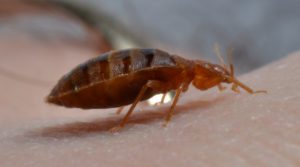
Bed bugs are all one of the most pervasive pests to infest colleges and universities. Unless you are highly sensitive to insect bites, these pests are relatively harmless but their bites can leave itchy welts behind. More significantly, bed bugs in dorm rooms can be difficult to get rid of. In college, 8 AMs should be your biggest struggle, not bed bugs. Unfortunately, a lot of dorm room inhabitants will bring in these pests without even knowing it.
Bed bugs are so prevalent because they can hitch a ride on just about anything and go unnoticed until they become a problem. Before bringing in that second hand futon you got from a yard sale or stack of used textbooks, inspect everything. Check the seams of fabrics for any bed bugs and any excrement or reddish brown splotches. If traveling by plane to your college dorm, check your luggage before you set it in your dorm room, and whatever you do, DO NOT put your luggage on your bed until you thoroughly check everything! Another way to avoid bed bugs at college is to seal your mattress with a bug-proof mattress protector.
Silverfish
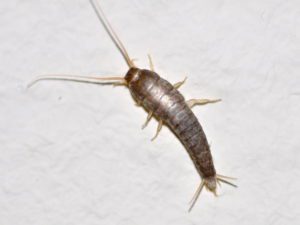
Silverfish may be harmless, but when you see a silver bug with lots of legs in the middle of the night (or even in broad daylight), they startle like something straight from a horror movie! Don’t worry, silverfish bugs won’t bite.
Silverfish like damp and dark places. Don’t leave wet clothes, towels and washcloths balled up on the floor or even in the laundry hamper. If you aren’t going to wash these items right away, hang them to dry, then place them in the laundry basket. Balling these damp items up can create a mildewy haven for lots of pests, not just silverfish.
Silverfish are nocturnal, so they typically show up during late night cram sessions. They like moisture and warmth which is why they like those damp hampers. These pests have carrot shaped bodies with thread like hairs coming out of the abdomen. They get their name from the silvery-gray coloring, but they can also come in other colors like brown and black. Their diet consists of paper, glue, and any starchy items you might have left hanging around.
Flies and gnats
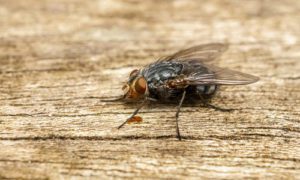
We all know what flies and gnats look like. Their six legs and buggy eyes follow you around the room and that persistent buzzing can make studying (or Netflix) distractingly difficult. You might want to add a flyswatter to your dorm room checklist!
Flies and gnats can be hard to get rid of once they invade. Flies like to swarm around decaying organic material so, take out the trash regularly to keep these guys away. A covered gnat proof trash can can help too. Sweep or vacuum the floor and dust frequently to deter gnats and flies from finding bits of food that fall to the wayside and making a home in your dorm.
Gnats are similar to flies in their buzzing and overall annoying tendencies. They thrive off moisture, so get rid of standing water like that cup of water or Coke that’s been on the windowsill since last week. Make sure not to overwater plants, because damp soil can also be a prime breeding spot. If you have a sink in your dorm, make sure there are no leaks in the faucet or the pipes below. Cockroaches, gnats and silverfish are all insects that like the moisture given off by leaky faucets.
If you have any windows in your dorm, check the screens for holes or tears where flying insects could get in. Contact your maintenance faculty to get a replacement screen if necessary.
Ants
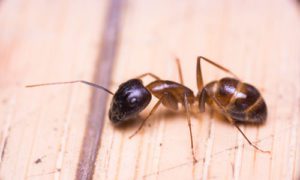
Ants are another common dorm pest. Ants do not pose an immediate danger, but some varieties can bite or sting. They are likely in your dorm because they’ve discovered a reliable food supply, especially foods high in sugar. A good first step for how to get rid of ants in your dorm is by removing any easily accessible food and wiping down the countertops. Gather any food products and place them in heavy duty, tightly sealed plastic containers and make sure to have maintenance seal any openings to the outside where the ants are getting in.
7 Tips to Keep Dorm Pests Out
Now that you know some of the common dorm bugs and pests, let’s look at seven tips for keeping pests out. Sorry to break the news but keeping a clean, sanitary dorm room is your best bet for keeping pests out. Here’s how:
1. Keep food sealed

Store food in sealed containers to protect it from pests.
Rodents like mice and rats, cockroaches and other pests can easily detect food from far away. To keep your food safe and to make your dorm as uninviting to pests as possible, keep your food sealed in heavy duty plastic containers. Mice and other rodents can sometimes chew through the inexpensive food containers, so you might want to invest in a more heavy duty,air tight plastic.
2. Vacuum and dust

Vacuum and dust regularly to keep a tidy, dust-free room.
Vacuuming and dusting on a regular basis cuts down on pests by making the space unappealing to bugs and other pests. Dusting and vacuuming will eliminate insect webbing, remove insect eggs or larvae too small to see and definitely food crumbs that pests like to eat.
3. Check window screens for tears and holes

Inspect window screens for tears and holes and ask for a replacement if necessary.
Window screens offer protection against pests, but their protection is minimized when there are holes and tears in the screens. Many flying and crawling pests get into buildings through this entryway. If you think your window screen needs replacing, notify your resident assistant (RA) or your maintenance faculty!
4. Pick up clutter
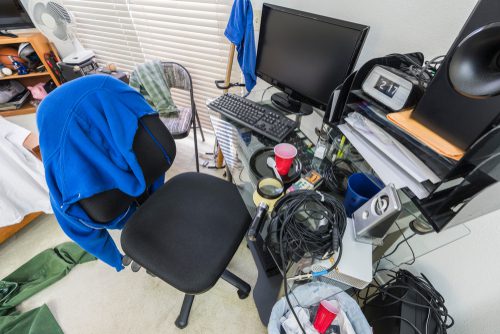
Keep clutter to a minimum to remove harborage points.
Know how to prevent cockroaches in your dorm? Keep it clean. Water, food and shelter are things every creature needs to survive. Pests like cockroaches thrive in places where there are a lot of harborage points. Leaving clothes, papers, books or shoes littering the floor in your dorm provides plenty of shelter for pests like cockroaches or mice. So keep your room tidy!
5. Wash and dry dirty dishes

Wash, dry and put away dishes to keep pests out.
Dirty dishes have delicious crumbs for potential invaders, and dishes that are left wet can provide water for them, too! Wash your dishes right after you dirty them. Don’t wait a week before you decide to wash a dish. Your dorm and your roommate will thank you.

6. Get rid of moisture and standing water
Keep tabs on leaky pipes and faucets. You may need to contact maintenance to fix the issue.
Many pests are attracted to moisture. When we leave out cups of water or sugary drinks, we provide an opportunity a pest is sure to take advantage of. You should also take note of any leaky faucets or pipes and notify your RA or maintenance faculty to have drips repaired.

7. Take out the trash
Keep trash sealed, and take it out regularly.
Sometimes, the trash can get away from us. The trash is a prime location for pests. It can become its own ecosystem. Keep your trash can covered and empty it frequently.
Help with Your Dorm Room Pests
If you do see these bugs in your dorm, notify your resident assistant (RA) or maintenance faculty immediately. Don’t try to get rid of the bugs yourself with DIY pesticides. Your institution has likely partnered with a professional pest control company that can take care of the problem more effectively than a DIY product can. You also don’t know what kind of treatment your room has undergone. A DIY product can react badly with the already placed product and pose a threat to your health.
